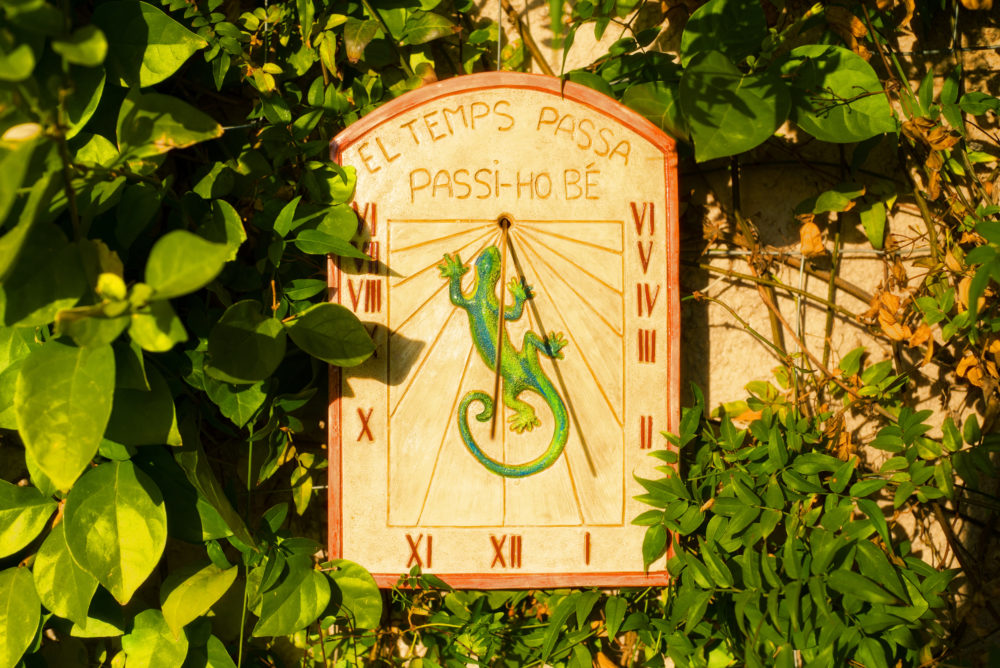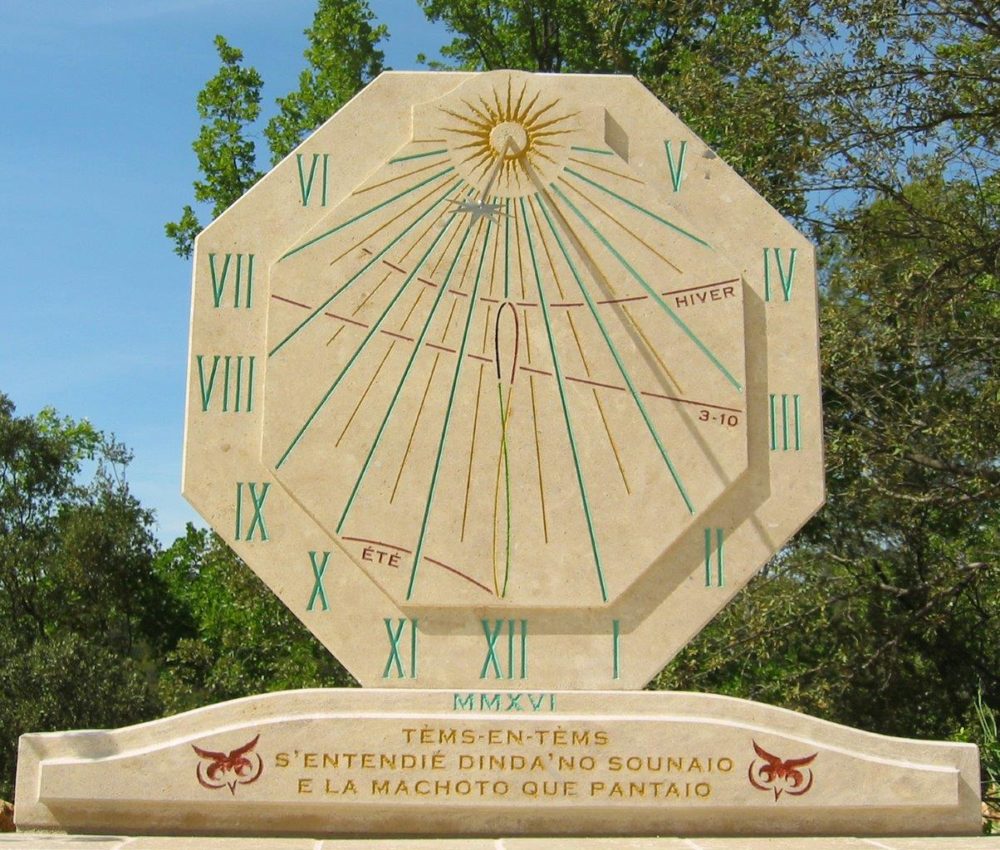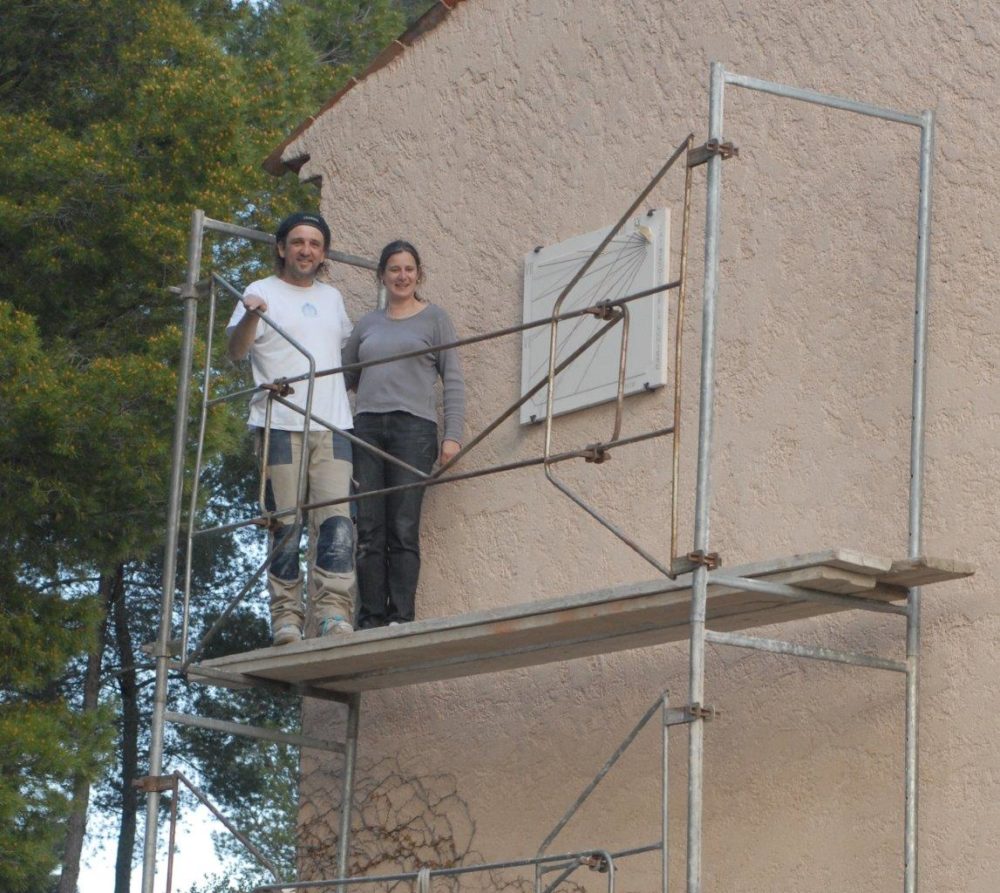It’s a trade more than 3,000 years old, but France still has many sundials and contemporary sundial makers.

An inexpensive ‘gecko’ sundial (Photo: Temps du Sud)
Should you be taking a leisurely stroll along the Rue Saint-Jacques in Paris’s Latin Quarter, you might be alerted to what time it is – and that maybe you shouldn’t be being quite so leisurely if you want to make that dinner reservation – by a famous sundial in the shape of a scallop shell.
This sundial was designed by Salvador Dalí and erected in 1966. With the eccentricity characteristic of the artist, he made the finishing touches in the company of his pet ocelot, all to the soundtrack of a live brass band. The shape is supposed to be in homage to the famous Saint-Jacques-de-Compostelle (the Camino de Santiago) pilgrimage, though people have also wondered whether the sundial’s moustache-like base and the intense blue eyes inlayed into its design are meant to be a kind of self portrait – they also look eerily similar to the eyes of Doctor T. J. Eckleberg in Fitzgerald’s The Great Gatsby.
Dalí’s sundial is one of the best-known, but it might surprise you to learn that there are still 120 sundials in Paris, and the Société Astronomique de France estimates that there are almost 18,000 in the country overall.

A sundial being made (Photo: Temps du Sud)
The first sundial on record appears in around 1,500 BC, in Ancient Egypt, and rather than the round or rectangular mounted wall structures we generally see today, it was L-shaped. By the 1st century BC, sundials were everywhere, but not always popular, and people resented the regulations that telling the time imposed. One citizen living in Rome back then angrily wrote “when I was young, there was no other clock but my belly … Now we [eat] when it pleases the sun.”
In the 14th century AD, the mechanical clock was invented. As it didn’t rely on external factors to work (i.e. sunlight), it threatened to eclipse sundials, and many sundials on churches and public monuments began to be replaced.
Those still fascinated by more organic time-telling methods, though, should head to the Hautes-Alpes region, which thanks to an artisan tradition dating back to the 18th century, has more sundials than any other part of France.

A highly accurate modern sundial from Pierres de Rosette (Photo: Pierres de Rosette)
Joseph Auvray began making sundials in 1988, and has a workshop in Mont-Dauphin, about 30 kilometres from the Alpine town of Briançon. He uses volcanic lava covered with enamel, which means that the colours and designs can last a hundred years, even though they’re constantly exposed to the elements.
Husband and wife team Virginie Moruzzi Six and Emmanuel Six create and design sundials together at their studio Pierres de Rosette in Le Thoronet, Southern France. They began making sundials by chance. Both loved boating, and were interested in how sailors used the sun and stars to navigate and tell the time.
Moruzzi Six does the designing and calculating, and her husband the stone-carving and metalwork to make the numerals and gnomon. For a sundial to accurately tell the time, the calculations need to be very precise.
“I never took a course, I taught myself using books,” explains Moruzzi Six. “There are lots of books on how to calculate sundials, some very old of course, but modern ones too. I used both, but the modern ones were much easier to follow! When designing a sundial, it’s the combination of mathematics and art that I find really satisfying.”
Together they’ve made over 120 sundials, many private commissions, but some on public monuments too. In 2014, they were commissioned to design and build a commemorative sundial in their town to honour those fallen in the two World Wars. Two of their sundials were tested by the Société Astronomique de France, and found to be so precise that they were awarded the much coveted ‘Gnomonic Precision Label’.

Sundial makers Virginie Moruzzi Six and Emmanuel Six (Photo: Pierres de Rosette)
Small sundials for homes are booming in popularity too, and artist Cécile Abregu sells her creations for roughly €30 each from her workshop near Perpignan. She uses a silicone mould and clay to allow her to produce sundials much more quickly.
“We’re not short of sunshine hours here, so there’s plenty of demand,” says Abregu.
It takes roughly a week to set the clay in a mould, but once set, Abregu can paint and varnish a sundial in as little as 45 minutes. They may not be as precise as Moruzzi Six and Six’s privately commissioned sundials, but they’ll still accurately tell the time to within five minutes of GMT. In order to work, they have to be mounted properly on a south-facing wall, and Abregu provides her clients with all the necessary instructions to mount their own sundials.
In the age of smartwatches, it would be easy to dismiss sundials as rather quaint, but with 1,344 sundials commissioned in the space of a year in the Hautes-Alpes alone, it seems that the sun is a long way from setting on their makers.